TOKYO, (Reuters) – Operators of a quake-crippled nuclear plant in Japan said they would try again tomorrow to use military helicopters to douse overheating reactors, as U.S. officials warned of a rising risk of a catastrophic radiation leak from spent fuel rods.
Officials scrambled to contain the nuclear crisis with a variety of patchwork fixes. The top U.S. nuclear regulator warned that one reactor’s cooling pool for spent fuel rods may have run dry and another was leaking.
“We believe that around the reactor site there are high levels of radiation,” Gregory Jaczko, head of the Nuclear Regulatory Commission, told a House Energy and Commerce subcommittee hearing.
“It would be very difficult for emergency workers to get near the reactors. The doses they could experience would potentially be lethal doses in a very short period of time.”
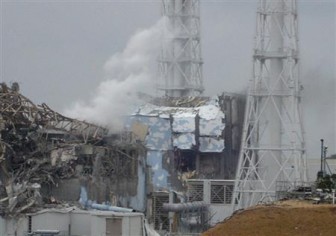
Health experts said panic over radiation leaks from the Daiichi plant was also diverting attention from other threats to survivors of Friday’s 9.0 magnitude quake and tsunami, such as the cold or access to fresh water.
The head of the world’s nuclear watchdog, meanwhile, said it was not accurate to say things were “out of control” in Japan, but the situation was “very serious”, with core damage to three units at the plant, around 240 kms (150 miles) north of Tokyo.
The latest photographs from the plant showed severe damage to some of the buildings after several blasts.
A stream of gloomy warnings and reports on the Japan crisis from experts and officials around the world triggered something of a meltdown in U.S. markets on Wednesday, with the Japanese yen surging to a record high against the dollar and all three major stock indexes slumping on fears of slower worldwide growth. European markets fared similarly.
Traders were glued to their screens, hitting the sell button every time officials gave ever bleaker assessments of the situation on the ground in Japan.
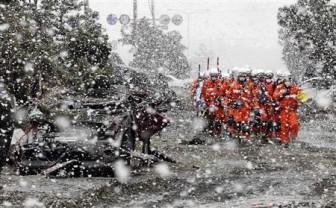
G7 Finance ministers will hold a conference call later tomorrow to discuss steps to help Japan cope with the financial and economic impact of the disaster, a source said.
Japan’s government said radiation levels outside the plant’s gates were stable but, in a sign of being overwhelmed, appealed to private companies to help deliver supplies to tens of thousands of people evacuated from around the complex.
Tokyo Electric Power Co. (TEPCO) officials said bulldozers attempted to clear a route to the reactor so firetrucks could gain access and try to cool the facility using hoses. Company officials also said limited power could be supplied to the facility at some point which could help restart pumps.
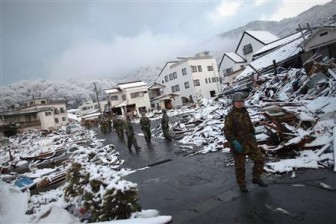
“People would not be in immediate danger if they went outside with these levels. I want people to understand this,” Chief Cabinet Secretary Yukio Edano told a news conference, referring to people living outside a 30-km (18-mile) exclusion zone.
High radiation levels on Wednesday prevented a helicopter from dropping water into the No. 3 reactor to try to cool its fuel rods after an earlier explosion damaged the unit’s roof and cooling system.
Officials from TEPCO said shortly after midnight (1500 GMT) that they would ask the military to make a second attempt later tomorrow.
The plant operator described No. 3 — the only reactor at that uses plutonium in its fuel mix — as the “priority”. Plutonium, once absorbed in the bloodstream, can linger for years in bone marrow or liver and lead to cancer.
If cooling operations do not proceed well, the situation will “reach a critical stage in a couple of days”, said an official with the government’s Nuclear and Industrial Safety Agency.
The situation at No. 4 reactor, where the fire broke out, was “not so good”, TEPCO added, while water was being poured into reactors No. 5 and 6, indicating the entire six-reactor facility was now at risk of overheating.
“Getting water into the pools of the No.3 and No.4 reactors is a high priority,” Said Hidehiko Nishiyama, a senior official at Japan’s Nuclear and Industrial Safety Administration.
“It could become a serious problem in a few days,” he said.
UNPRECEDENTED CRISIS, SAYS EMPEROR
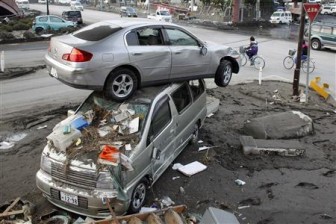
Japanese Emperor Akihito, delivering a rare video message to his people today, said he was deeply worried by the crisis which was “unprecedented in scale”.
“I hope from the bottom of my heart that the people will, hand in hand, treat each other with compassion and overcome these difficult times,” the emperor said.
Panic over the economic impact of last Friday’s massive earthquake and tsunami knocked $620 billion off Japan’s stock market over the first two days of this week, but the Nikkei index rebounded on Wednesday to end up 5.68 percent.
The Tokyo Stock Exchange and the Financial Services Agency plan to keep the stock market open despite calls for a halt to trading, mainly from foreign financial institutions, the Nikkei business daily said.
TSE President Atsushi Saito said the exchange “will continue to provide investors with an opportunity to trade”, calling it “an important piece of social infrastructure”.
“If we put a stop to trading, it will be seen as a confirmation of the concerns among foreigners and could trigger panic,” a senior TSE official was quoted as saying by the Nikkei.
Estimates of losses to Japanese output from damage to buildings, production and consumer activity ranged from between 10 and 16 trillion yen ($125-$200 billion), up to one-and-a-half times the economic losses from the devastating 1995 Kobe earthquake.
Damage to Japan’s manufacturing base and infrastructure is also threatening significant disruption to the global supply chain, particularly in the technology and auto sectors.
EMBASSIES URGE CITIZENS TO LEAVE
Scores of flights to Japan have been halted or rerouted and air travellers are avoiding Tokyo for fear of radiation. On Thursday the U.S. Embassy in Tokyo urged citizens living within 50 miles (80 kms) of the Daiichi plant to evacuate or remain indoors “as a precaution”, while Britain’s foreign office urged citizens “to consider leaving the area”.
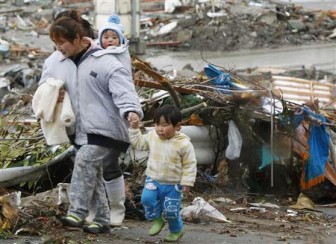
The warnings were not as strong as those issued earlier by France and Australia, which urged nationals in Japan to leave the country. Russia said it planned to evacuate families of diplomat on Friday.
In a demonstration of the qualms about nuclear power that the crisis has triggered around the globe, China announced that it was suspending approvals for planned plants and would launch a comprehensive safety check of facilities.
China has about two dozen reactors under construction and plans to increase nuclear electricity generation about seven-fold over the next 10 years.
Russian President Dmitry Medvedev said nuclear power was safe provided power stations were built in the right place and designed and managed properly. Russia ordered checks at nuclear facilities on Tuesday.
In Japan, the plight of hundreds of thousands left homeless by the earthquake and devastating tsunami that followed worsened following a cold snap that brought snow to worst-affected areas.
Supplies of water and heating oil are low at evacuation centres, where many survivors wait bundled in blankets.
About 850,000 households in the north were still without electricity in near-freezing weather, Tohuku Electric Power Co. said, and the government said at least 1.5 million households lack running water.





